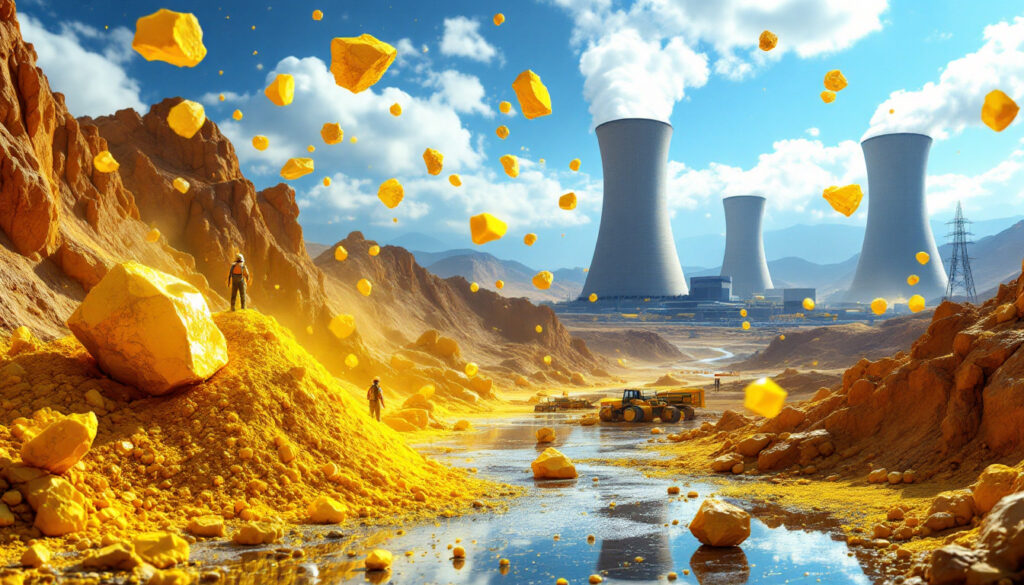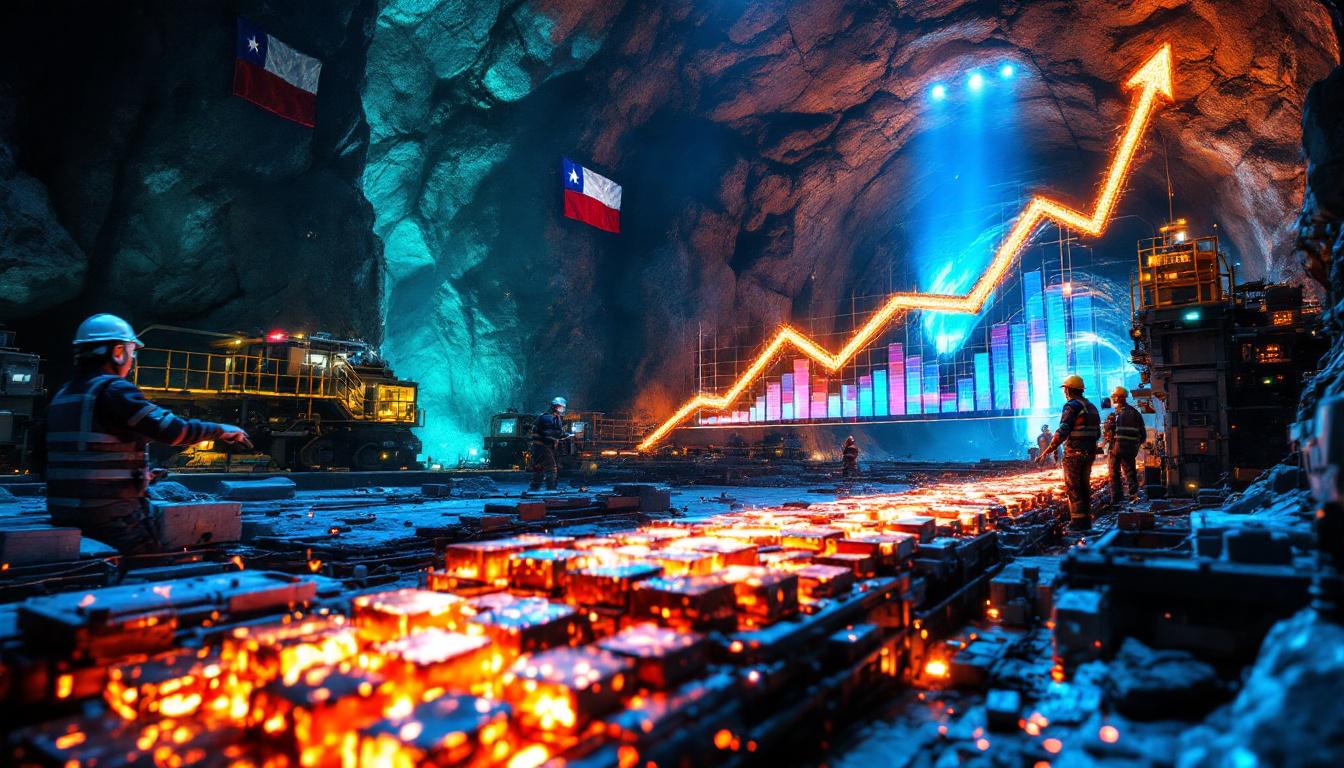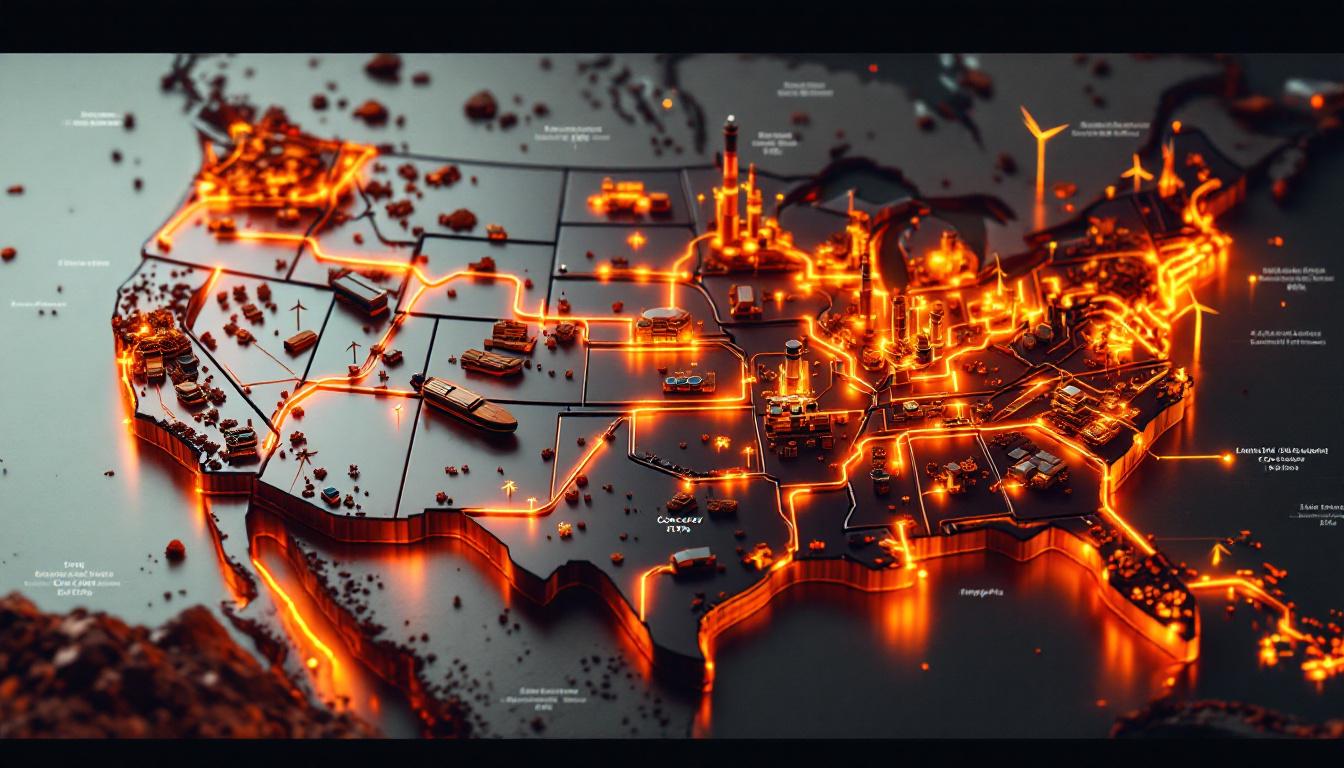Investments in Uranium Resources for Nuclear Growth: A Comprehensive Guide
The global uranium sector faces a critical juncture as nuclear energy regains prominence in climate mitigation strategies. Identified recoverable uranium resources reached 7.93 million tonnes (mt) as of January 1, 2023, with sufficient geological potential to support nuclear expansion through 2050. However, realizing this potential requires $840 million in exploration investments (2023 figures) and strategic policy frameworks to overcome regulatory, technical, and geopolitical challenges. Understanding uranium market dynamics is crucial when analyzing the seven core dimensions of uranium resource development, integrating quantitative data from industry reports, expert insights from multilateral organizations, and technological innovations reshaping extraction methodologies.
What Are the Current Global Uranium Resources?
Global Uranium Resource Base Overview
The 7.93 mt of identified resources represent only a fraction of Earth's total uranium endowment. Current estimates suggest 35 mt of conventional resources remain undiscovered, with an additional 7.6 mt in unconventional sources like seawater extraction and phosphate deposits. Regional distribution shows Kazakhstan (15%), Canada (10%), and Australia (30%) dominating reserves, creating supply chain vulnerabilities for import-dependent nations.
Recent technological advancements have expanded economically viable resources through in-situ recovery (ISR) techniques, which now account for 57% of global uranium production. These methods reduce extraction costs by 30–50% compared to conventional mining while minimizing surface disruption. A comprehensive uranium production guide can provide further details on extraction methodologies.
Recent Trends in Uranium Exploration
Exploration spending rebounded to $800 million in 2022, reversing a 22% decline during the 2020–2021 pandemic period. Junior mining companies allocated 65% of 2023 budgets to greenfield projects in Africa and Central Asia, targeting under-explored sedimentary basins. However, permit approval timelines have extended to 7–10 years in OECD countries due to heightened environmental scrutiny, delaying production starts despite price surges to $85/lb in Q4 2024.
Why Is Investment in Uranium Resources Necessary?
The Nuclear Growth-Investment Connection
The International Atomic Energy Agency (IAEA) projects 2.3–3.7% annual growth in nuclear capacity through 2050, requiring 74,000–122,000 mt of cumulative uranium demand. Meeting this demand necessitates $12–18 billion in mine development capital by 2035, particularly for high-grade deposits like Canada's Athabasca Basin (15–20% U3O8 concentrations). According to a recent Red Book report, significant investments in new uranium mines are needed to meet future nuclear energy growth.
Private equity inflows into uranium ventures grew 18% YoY in 2024, yet remain 40% below 2011 levels, reflecting lingering risk aversion post-Fukushima. Strategic government interventions, such as the U.S. $3.5 billion Nuclear Fuel Security Program, aim to de-risk projects through off-take agreements and loan guarantees.
Challenges Facing Uranium Production
A 4% production increase (2020–2022) masks systemic bottlenecks:
-
Regulatory delays: Environmental impact assessments now average 34 months in democratic jurisdictions vs. 12 months in state-controlled systems
-
Infrastructure gaps: 60% of African uranium projects lack grid power access, requiring $200–400 million in CAPEX for off-grid solutions
-
Labor shortages: The mining sector faces a 40,000-person skilled worker deficit by 2030
How Do Geopolitical Factors Impact Uranium Investment?
Regional Supply Dynamics
The U.S. market contraction illustrates geopolitical risks—domestic utility purchases fell 45% after proposed 15% uranium import tariffs created uncertainty. Concurrently, China's "Belt and Road" uranium initiatives secured 12 African mining licenses in 2024, aligning with its goal to triple nuclear capacity by 2035.
Russia's Rosatom maintains leverage through 40% of global enrichment capacity, prompting NATO members to allocate $2.1 billion for alternative fuel cycle infrastructure. These dynamics underscore the criticality of diversification strategies, with Japan recently securing 10-year contracts with Canadian and Namibian suppliers. A detailed uranium mining analysis can provide further insights into these complex supply dynamics.
Risk Mitigation Strategies
Leading utilities now employ three-pronged approaches:
-
Strategic reserves: France maintains 5 years' worth of reactor requirements
-
Equity stakes: South Korean conglomerates acquired 15% equity in Kazakhstan's Budenovskoye mine
-
Technological hedging: Bill Gates' TerraPower invested $750 million in alternative fuel cycles reducing uranium demand by 25%
What Are the Projections for Nuclear Power and Uranium Demand?
Growth Scenarios Through 2050
The IAEA High Case forecasts 890 GW of nuclear capacity by 2050, requiring annual uranium production of 130,000 mt—double current output. Small Modular Reactors (SMRs) could alter demand profiles, with NuScale's design using 17% less fuel per MWh than traditional PWRs.
Supply-Demand Balance Considerations
Secondary supplies from weapons-grade downblending and reprocessed fuel currently satisfy 22% of demand, but these sources will dwindle post-2030. Primary production must expand 3.5% annually to prevent deficits, necessitating 16 new mines of Cigar Lake's scale (6,900 mt/year). Price sensitivity analyses indicate $60/lb sustains existing operations, while $90+ triggers greenfield development. This creates significant uranium investment opportunities for forward-thinking investors.
How Can Technology Enhance Uranium Resource Development?
Innovations in Exploration and Mining
AI-driven prospecting reduced discovery costs by 40% by analyzing satellite data and historical drilling logs. Canada's Phoenix Project utilizes neutron activation analysis to detect uranium through 300m of overburden, while bioleaching techniques improve recovery rates from low-grade ores by 18%.
Processing and Recovery Advancements
Laser enrichment (SILEX) promises 30% energy reduction vs. gaseous diffusion, with Global Laser Enrichment's Wilmington facility slated for 2026 commissioning. Simultaneously, seawater extraction prototypes achieved $200/kg production costs—still uneconomical but highlighting long-term potential. According to World Nuclear, sufficient uranium resources exist, but significant investments are needed to bring them online for future consumption.
What Investment Opportunities Exist in the Uranium Sector?
Direct Investment Channels
The Global X Uranium ETF (URA) holds $3.2 billion in assets, with top holdings in Cameco (+32% YTD) and NexGen Energy (+41%). Project financing structures now favor streaming agreements—Wheaton Precious Metals' $300 million deal with Denison Mines exemplifies this trend.
Strategic Partnership Models
Utility-producer JVs mitigate risks through integrated fuel cycles:
-
Constellation Energy-URAA: 15-year supply pact with 20% price indexing
-
EDF-Orano: Co-development of geological AI models for Niger deposits
-
KEPCO-BHP: $1.4 billion investment in Olympic Dam expansion
How Does Environmental Sustainability Factor into Uranium Resource Development?
Environmental Considerations in Uranium Mining
Modern ISR operations reduce water usage by 70% and eliminate tailings ponds. The WNA's Charter mandates members to achieve Net Zero mining operations by 2040, with Kazatomprom pioneering solar-powered extraction systems. Life-cycle assessments show nuclear's 12 gCO2/kWh emissions outperform solar (48 g) and natural gas (490 g). Australia is making significant progress in unlocking nuclear potential through environmentally responsible mining practices.
Nuclear Power's Environmental Profile
Advanced reactors address waste concerns:
-
Molten salt designs consume 95% of actinides
-
GE Hitachi's PRISM converts plutonium stockpiles into energy
-
Deep borehole disposal trials achieved 3km containment depths
What Policy Frameworks Support Uranium Resource Investment?
National Strategies for Nuclear Fuel Security
The U.S. Inflation Reduction Act provides $700/t tax credits for domestically-mined uranium, while Canada's Critical Minerals Strategy fast-tracks permits for 28 high-priority projects. France's Nuclear Revival Act includes €1 billion for uranium recycling R&D.
International Coordination Mechanisms
The IAEA's LEU Bank in Kazakhstan holds 90 mt of fuel as a supply buffer. The G7's 2024 Compact commits members to double enrichment capacity by 2030 through technology sharing.
Conclusion: The Path Forward for Uranium Resource Investment
The uranium industry must reconcile geological abundance with financial/political constraints to enable nuclear's climate contributions. Strategic priorities include:
-
Accelerating regulatory reforms to halve project timelines
-
Tripling public R&D funding for extraction/recycling tech
-
Expanding multilateral fuel banks to insulate against geopolitical shocks
With $120 billion in cumulative investments needed by 2040, stakeholders must balance short-term market signals with long-term energy transition imperatives. Investments in uranium resources for nuclear growth will remain a critical component of the global energy landscape for decades to come.
Want to Stay Ahead of Major Mineral Discoveries?
Discover potentially transformative ASX mineral announcements before the broader market with Discovery Alert's proprietary Discovery IQ model, which delivers real-time alerts on significant discoveries across over 30 commodities. Explore how historic discoveries have generated substantial returns by visiting the dedicated discoveries page and begin your 30-day free trial today.




